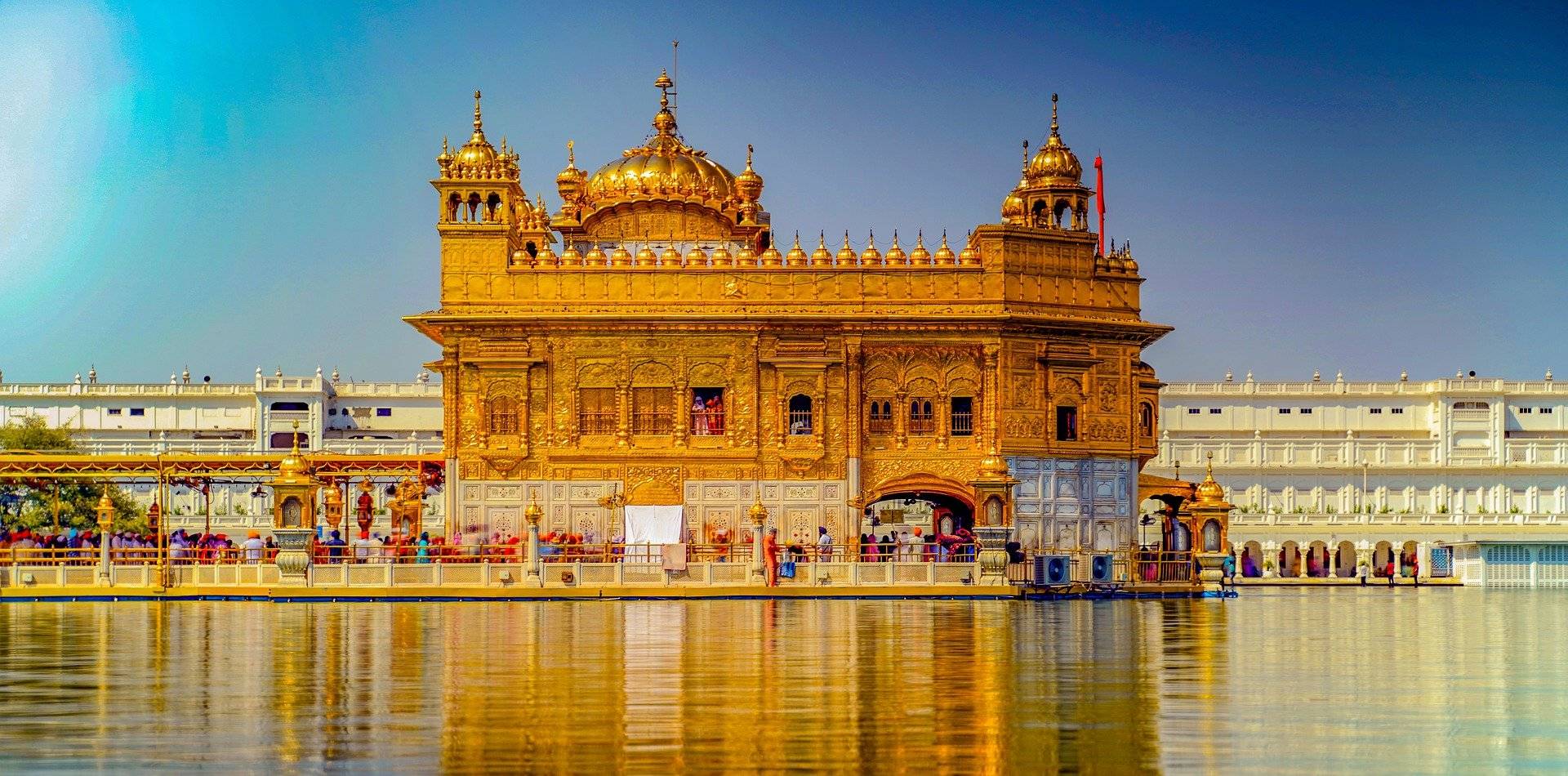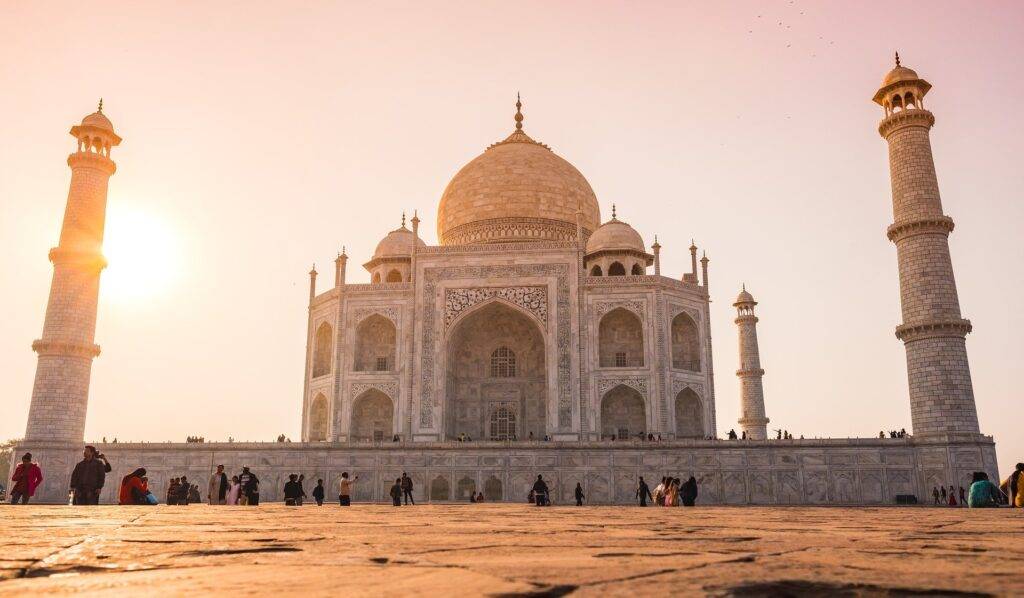India dates back to thousands of years, according to several accounts which based on many religions writer by either Indian historians or foreign travelers, including Fa-hien, Ibn Battuta, Hsuan Tsang, Niccolo de conti, Abd-al-Razzāq, these names are not going to be counted on finge. India is a home of numerous monuments which were commissioned by different rulers of different dynasties. Monuments can be in the form of temples, tombs, mosque, stupas, forts etc. Top 10 most visited monuments have been compiled here to provide you deep-insight into India.
Taj Mahal: A Symbol of Eternal Love
Taj Mahal, the monument of promising-love, dedication, sacrifice, comes on the list of one of the 7th wonders of the world, built by 5th Mughal ruler Shah Jahan in memory of his beloved Mum Taj that been completed in 1653. Being one of the finest examples of Indo-arsenic architecture made of white marble and is flanked by two other monuments of vermilion stone. The captivating carving and art of Pietra-Dura can be a good feast to travelers’ eye. Taj Mahal in Agra will give you an idea about bygone engineering of India that can make you speechless and dumb-founded.
Golden Temple, Amritsar

Stunning Golden temple in Amritsar is dedicated to the youngest religion of India which came into existence in 1469, is situated in the heart of the city built by 4th Guru Ram Das and a copy of its religious epic Adi-Granth placed by 5th Guru Arjun Dev in 1604 since then it turns out to be one of the sacred sites of Sikhism is known as Harmandir Sahib it means a bode of God. With a mesmerizing architecture of this temple is a fusion of Indo-Islamic and Hindu-Rajput architecture. It is decorated in gold foil and situated in the midst of a water body is known as Amritsar that derives the name of this city. The high-light of this temple is its community kitchen which is attended by more than 1, 00,000 devotees to have free meal. Apart from the main sanctum of this temple, it houses many other edifices, including water body, Museum, clock tower, offices, Akal Takht which is one of the five seats of power in Sikhism.
Qutab Minar: The Victory Tower of India
The victory tower of India is situated in Delhi built by slave ruler Qutb al-Din Aibak in memory of his religious teacher Qutbuddin Bakhtiar Kaki in 1198 but completed by his son in law Iltutmish in 1215, while two top stories were built at later after demolishing of 27 Hindu and Jain temples. The story behind building this monument was to show the power of Islam after winning the 2nd battle of Tarain which was bought between Prithviraj Chauhan and Mohammad Gori. This tower has a flight of steps that are fluted with shaft lead towards the top. The Outer surface is decorated with geometric patterns and inscriptions. Being one of the most visited and prominent sites in Delhi, it was declared UNESCO world heritage site.
Gateway of India, Mumbai
The gateway of India was built to celebrate the arrival of King V George and Queen Mary who came to attend the Delhi Darbar that was held in 1911. The completion work was done by the end of the 1924 under the supervision of Scottish architecture George Wittet. The idea of constructing this monument is taken from a Triumphal Arch, in Paris, based on indo-saracenic architecture with Gothic cusped arches, stained glass, tracery, domes, spires etc. Due to these features, it has been one of the most celebrated monuments in Mumbai.
Amer Fort, Jaipur

It dates back to 11th century built by Kachwaha ruler situated on the Aravali Range, subsequently enlarged and decorated by Jai Singh 1st known as one of the most protected forts in Rajasthan. Having been listed on the UNESCO World Heritage Site, it draws million of domestic and international tourists every year. Scaling to the fort on elephant is a great experience and gives royal glimpse. It has been a first choice among tourists to visit this site due to its architecture which is a fusion of both indigenous and Mughal. A stunning view of Maota Lake as well as Aravali Range mesmerizes tourists a lot.
Sanchi Stupa, Sanchi
Sanchi stupa is the oldest surviving stone structure in India that is a perfect example of Buddhist architecture built by King Ashoka in 3rd century BCE. It is one of the most prominent shrines for Buddhist people because the main chamber has relics of Lord Buddha. History lovers who want to see the evolution of architecture in India is a perfect landmark for them to start from here.
Mehrangarh Fort, Jodhpur
This majestic fort is known as a hill-top fort of Rajasthan built by Rao Joda in 1459. The huge walls of this fort are enough to make the conquering intention of enemy impossible. This fort used to be a hot seat for the Rathore clan and from there they would control their territory. While being on the top of the fort, one can get incredible view of blue city of Jodhpur. it boasts many places, including , courtyard, dungeons, massive and well-protected doors like Suraj Pol and Loha pol or Jai pol, Sheesh Mahal, Moti Mahal, Phul Mahal, etc. if you happen to be there, do not miss to visit the legacy of rathore dynasty.
Meenakshi Temple, Madurai

Meenakshi is a name of Lord Shivas’ wife Parvati who had married to him here. The age of this temple according to Tamil Sangam Literature dates back to over 2500 years. It is believed to be one of the 7th wonders of the world due to its impressive architecture which can be a great place for history lovers as well as devotees. It draws millions of tourists every year as well. The most enchanting activity which cannot be missed by pilgrimages is that the perambulation in which a portrait of Lord Shiva is kept in chariot and taken around the temple is performed in the evening without fail.
Golden Fort, Jaisalamer
Golden fort, Situated on a hill top built by Rawal Jaisal in 1156 AD is living fort of in the state of the Rajasthan, nearly 40 percentage of the population of this town within it. The growing population starts living outside of this fort. The ruler of this fort can control the silk route easily which leads to the Europe used to be one of the most prominent routes of the world for trading. This fort of Jaisalmer consists of many places, including The Raj Mahal, Jain temples, Laxminath Temple, Tazia tower, and many more which provide regal life style as well as their architectural skills.
Khajuraho Temples
Khajuraho Temples are the prominent examples of architecture and engineering which was shown by Chandela Dynasty between 950 and 1050 AD. Unfortunately, 25 temples have been left within the area of 6 square KM today, and rest of the temples are no more to be found there which used to be spread in the area of 80 square KM. It is a complex of Hindu and Jain temples. The Kandariya Mahadev temple is one of the largest and most beautiful monuments in this complex. Khajuraho group of temples came under attack by Muslim invaders from the period 12th to 18th centuries. Sikander Lodhi is one of the leading Muslim rulers who destroyed most of its temples. However, it comes on the list of UNESCO World Heritage site in India.

